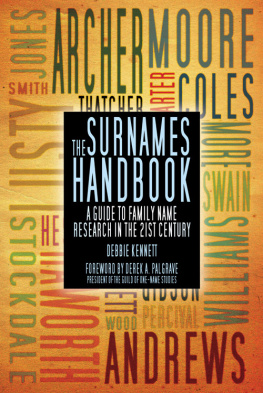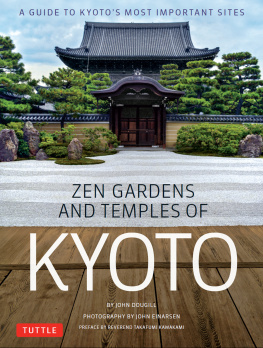ROUTLEDGE LIBRARY EDITIONS:
ZEN BUDDHISM
Volume 7
THE WILD, WHITE GOOSE
THE WILD, WHITE GOOSE
the Diary of a Female Zen Priest
REV. RSHI P.T.N.H. JIYU-KENNETT
First edition published in two volumes Volume I (Books 1 & 2) in 1977 and
Volume II (Books 3 & 4) in 1978 by Shasta Abbey
Second edition published in 2002 by Shasta Abbey
This edition first published in 2016
by Routledge
2 Park Square, Milton Park, Abingdon, Oxon OX14 4RN
and by Routledge
711 Third Avenue, New York, NY 10017
Routledge is an imprint of the Taylor & Francis Group, an informa business
2002 Shasta Abbey
All rights reserved. No part of this book may be reprinted or reproduced or utilised in any form or by any electronic, mechanical, or other means, now known or hereafter invented, including photocopying and recording, or in any information storage or retrieval system, without permission in writing from the publishers.
Trademark notice: Product or corporate names may be trademarks or registered trademarks, and are used only for identification and explanation without intent to infringe.
British Library Cataloguing in Publication Data
A catalogue record for this book is available from the British Library
ISBN: 978-1-138-18505-0 (set)
ISBN: 978-1-315-61954-5 (Set) (ebk)
ISBN: 978-1-138-65894-3 (Volume 7) (hbk)
ISBN: 978-1-138-66623-8 (Volume 7) (pbk)
ISBN: 978-1-315-61990-3 (Volume 7) (ebk)
Publishers Note
The publisher has gone to great lengths to ensure the quality of this reprint but points out that some imperfections in the original copies may be apparent.
Disclaimer
The publisher has made every effort to trace copyright holders and would welcome correspondence from those they have been unable to trace.
THE
WILD, WHITE
GOOSE
the Diary of a Female Zen Priest
THE
WILD, WHITE
GOOSE
the Diary of a Female Zen Priest
by
Rev. Rshi P.T.N.H. Jiyu-Kennett

Shasta Abbey Press
Mount Shasta, California
Second Edition2002
2002 Shasta Abbey.
All rights reserved.
No part of this book may be reproduced in any form except for brief excerpts for purposes of review without written permission from Shasta Abbey, 3724 Summit Drive, Mt. Shasta, CA 96067-9102; (530) 926-4208.
The first edition of The Wild, White Goose was published in two volumesVolume I (Books 1 & 2) in 1977 and Volume II (Books 3 & 4) in 1978. Some portions of this book have appeared in The Journal of Shasta Abbey.
Front cover: The author reading the Scriptures as a junior monk at Dai Hon Zan Sjiji.
Frontispiece: The author after her ordination ceremony in Malaysia.
Page 474: The author leading the procession at the Jkai ceremony of Ketchimyaku at Shasta Abbey.
Printed in the United States of America.
ISBN 0-930066-23-5
Library of Congress Control Number: 2001135933
The TransIndic Transliterator font used to print this work is available from Linguists Software, Inc., PO Box 580, Edmonds, WA 98020-0580 USA tel (425) 775-1130.
To all women seeking Spiritual Truth and especially
to those who have ever entered into Zen training.
Acknowledgments.
The author wishes to thank all those
who helped in the production of this book.
This book may do the reader more harm than good if he does not first read this preface; and it will be worse than useless to him spiritually if he does not read the annotations as they occur in the text.
This book is published purely for the purpose of showing how Buddhist training was done by me in the Far East. The material for this book has been taken from diaries covering a period of almost eight years spent by me in Far Eastern temples. In Books One and Two I describe the first two and a half years of my religious training as a junior trainee in one of the leading monasteries of Zen in Japan, up through my first kensh and my Transmission as an heir in the Dharma to the Chief Abbot. The training of a junior, although often a somewhat gruelling experience, is to a certain extent like the cultivation of a hot-house plant. Once one has found ones True Nature and had ones faith and spiritual strength established in the semi-seclusion of the junior years in a monastery, it is necessary to be trans-planted into the world, without leaving the actual monastery itself, for that faith and strength to grow to the point of being able to be of real use to others. Books Three and Four are the story of the growth of a Zen priest into a teacher through the process of testing and trial which six years of the responsibili ties of holding office in the monastery, dealing with religious politics, and running my own temple naturally provided. It is through this seeming morass that each of us must travel if we are to progress from our initial understanding of the Truth to higher spirituality. This aspect of religious training is particu-larly relevant both to the senior trainee, priest, or new teacher and to the advanced Buddhist laymanall of whom are faced daily with some form of the experiences recounted herein. The particular form which those events took for me was, of course, in part determined by the fact that I was a Western trainee in a Japanese setting; very similar occurrences happened to all of the other Western trainees whom I knew in the Orient. The reader should always remember that the purpose of this book is to show him or her how training must be done in the mud of daily life in order to grow straight and strong the stem of the lotus flower of his own spirituality. To this end great care should be taken to read the numbered footnotes which serve to indicate where I went wrong in my own training at that time. This work is equally meant to teach by the example of what not to do! Above all, please do not become caught up in the appar ent unfairness of the actions of some of the people around me. What they did must be included here in order that one can see my reactions to it, both wise and unwise; their actions are not published to cause others to become angry and especially they are not published to cause the reader to engage in idle speculation as to peoples identities. I have no wish to identify, expose, or embarrass anyone whatsoever.
For this reason, and because I value highly the right to privacy of everyone, I have found it necessary to not only change names and locations, but also years, countries, and, in some instances, the sexes, ages, habits and behavioural traits of characters. Some characters represent a combination of several real people; some real people whom I knew in the East at that time are not represented here at all; some characters have been invented for the sake of reporting certain thoughts which are germane to the teaching. Some teachings discovered later have been reported in conversation form here for the sake of making a more complete book although they did not necessarily take place with the characters I have indicated. All of this I have done since I have












 Shasta Abbey Press
Shasta Abbey Press